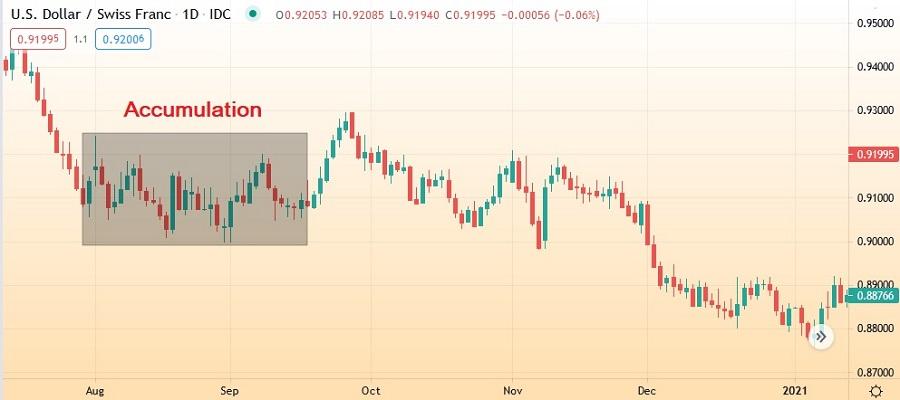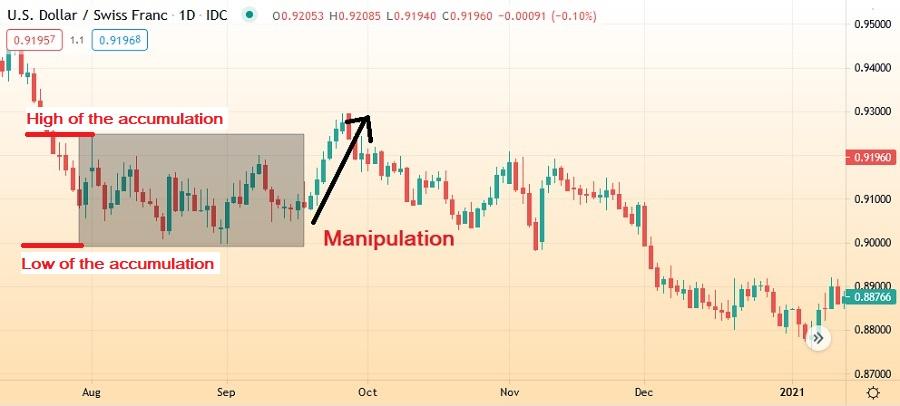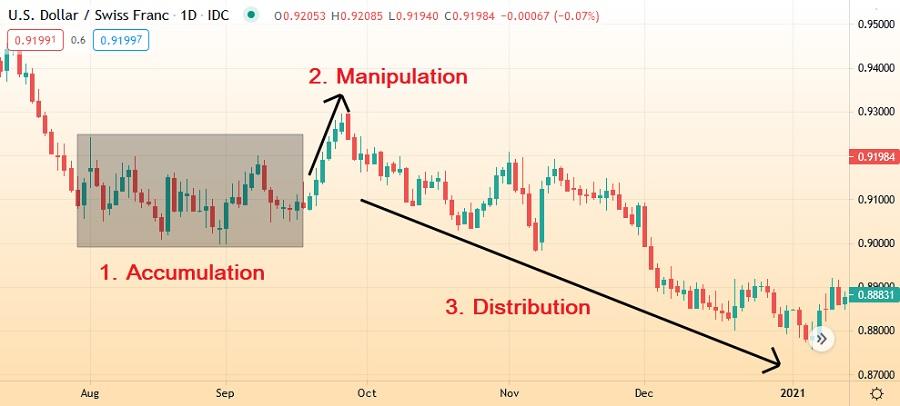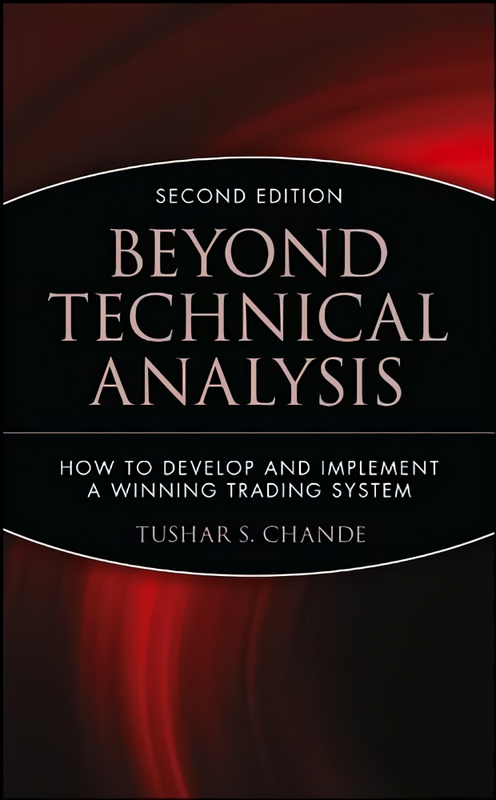Many traders want to know how to trade in position with the banks. Why is it so important? We're going to learn all about it in this bank trading strategy.

Forex is by far the largest financial market in the world with a daily volume of $6.6 trillion. Every party, from big banks to individual investors, takes part in the forex market in the hope of making profits from currency fluctuations.
A large portion of forex daily volume is controlled by the big banks. For the record, the interbank market is not exclusive to banks. Other participants like investment managers and hedge funds also make this category.
They have the power to dictate which direction the market moves, and when they want it to happen. Thus, it is in your best interest to not trade against the banks. After all, they are profitable in 9 out of 10 trades, while retail trader loses 9 out of 10 trades.
There's a saying that goes "If you can't beat them, might as well join them". And so, you can learn how to trade like banks with the following strategy.
What is Bank Trading Strategy?
The forex bank trading strategy is a method to identify the likeliest price levels for the banks to open and close their positions based on supply and demand areas. The banks control the majority shares of forex daily volumes, so when they move, the market moves. With this piece of information in mind, we can track their trading activity as the basis of bank trading strategy.
The 3 Key Steps
When it comes to forex trading, the banks conduct their activity in three steps i.e. accumulation, manipulation, and distribution/market trend. Accumulation is the step where banks enter their positions, manipulation is the phase where a false push appears, distribution is the stage where a trend begins.
Before we discuss these three steps in detail, we should keep in mind that the law of supply and demand applies to forex trading. If you want to buy a currency in the market, there must be someone else who is willing to sell. Likewise, if you want to sell a currency, another trader must be willing to buy. The buying and selling counterpart always happens in every transaction.
So based on the law above, if the bank plans to buy a large position, they must find an equal amount of selling pressure. It would be easier for us to spot their trade if they enter the market in one large order. But obviously, this is not the case. What they do instead is to place their order over time, which is also known as the accumulation step.
1. Accumulation
Accumulation is the first step that you must identify in the bank trading strategy. The banks enter the market by accumulating either a long position that they will later sell at a higher price or a short position that they will later buy back at a lower price. If we can identify the accurate price levels where the banks are accumulating, we will also be able to identify the direction of upcoming price movements. That's why accumulation is a very essential step in bank trading strategy.
Unlike retail traders, banks must enter positions over time due to their massive trading volumes. They do this to conceal their activity as a single large order would spike the market.
To understand what the accumulation step looks like, let's see the USD/CHF chart below.

Accumulation is characterized by a ranging market where the price moves sideways. This is the area where the banks regularly entered the market to accumulate their desired position at intervals of hours or days.
2. Manipulation
Manipulation is the next step after accumulation. This step is characterized by a false push that starts a short-term market trend. Retail traders often fall victim to market manipulation. They would enter positions when they see there is a potential breakout. But it turns out it is just a false push and the price later moves in the opposite direction.
If you're ever in this situation, it's not bad luck. It does not mean the forex market is unfair to you. Most likely, though, you're being used by the banks. How so?
Let's say the banks are trying to enter or accumulate a long position. At the same time, they will also create selling pressures. They will try to 'manipulate' retail traders to enter short positions.
To track the banks, we need to identify the false push that marks the end of an accumulation phase. How can we identify this false push or manipulation? Let's take a look at the chart below.

For bearish market, a false push can be identified when the price moves beyond the high of an accumulation period which indicates that the banks have been selling into the market. After the false push, we will most likely see a short-term downtrend.
For bullish market, a false push can be identified when the price moves beyond the low of an accumulation period which indicates that the banks have been buying into the market. After the false push, we will most likely see a short-term uptrend.
3. Distribution or Market Trend
Distribution is the step where we can make profits from the market. At this point, the banks have accumulated their position and created market manipulation. They are not trying to conceal their presence anymore. Now, banks will try to push the price toward a particular direction, meaning that this is the phase where a market trend begins.

Figuring out the market distribution can be considered to be the easiest of the three steps, but this task is highly dependent on the previous two steps. It is very imperative that we avoid the manipulation trap. If we understand how the banks manipulated the market, we will be able to identify the direction of the market trend that banks attempt to push. Our next task then is to simply ride the trend.
What are the Biggest Banks that Trade Forex?
Now that we understood how to anticipate bank strategy, we may need to recognize who the major players are. After all, they often make headlines and so some news about them could help our analysis.
Based on a survey in 2019, the only non-bank entities that dominate the forex trading were XTX markets and Jump Trading. The rest are investment banks. Here are the details:
| Name | Market Share (%) |
| US - JP Morgan | 10.78 |
| Swiss - UBS | 8.13 |
| UK - XTX Markets | 7.58 |
| Germany - Deutsche Bank | 7.38 |
| US - Citi | 5.53 |
| UK - HSBC | 5.33 |
| US - Jump Trading | 5.23 |
| US - Goldman Sachs | 4.62 |
| US - State Street | 4.61 |
| US - Bank of America Merrill Lynch | 4.5 |
This is the first part of a bank strategy for retail traders. In the next part, we're going to reveal the implementation of the bank strategy in trading and several key tips on how to trade like a bank.

 Dedicated FREE FOREX VPS
Dedicated FREE FOREX VPS Free FOREX Virtual Private Server
Free FOREX Virtual Private Server MT4 Demo Contest, Get $500
MT4 Demo Contest, Get $500 Sign Up for an Account, Claim 60% Deposit Bonus
Sign Up for an Account, Claim 60% Deposit Bonus Free MT4/MT5 VPS 2024
Free MT4/MT5 VPS 2024 Send E-mail and Get Free Merchandise
Send E-mail and Get Free Merchandise $1K Refer a Friend Bonus for Pepperstone Pro clients
$1K Refer a Friend Bonus for Pepperstone Pro clients Maximize Your Earnings with 100% Deposit bonus
Maximize Your Earnings with 100% Deposit bonus Trade to Win, $5,000 Monthly Demo Contest
Trade to Win, $5,000 Monthly Demo Contest Claim 30% + 15% Deposit Bonus from LiteFinance
Claim 30% + 15% Deposit Bonus from LiteFinance













2 Comments
Herry
Jan 21 2024
At least I know little bit about the participant of Forex Trading. The article said that Forex is the world's biggest financial market, dealing with a whopping $6.6 trillion daily. Big banks and everyday investors join in, hoping to profit from currency changes. Banks play a major role, but it's not just for them – investment managers and hedge funds also dive in. It's smart to watch what they do; if they buy, maybe we should too. Now, here's a simple question: do banks always trade in Forex, and do they use their own money or people's money for it?
Teddy
Jan 25 2024
Actually, they don't consistently engage in trading. Whether banks participate in forex trading depends on various factors such as market conditions, their specific trading strategies, and overall financial objectives. Some banks actively trade currencies using their own capital, aiming to capitalize on market opportunities and generate profits directly from their funds.
On the flip side, banks often operate on behalf of clients, managing investment portfolios and executing trades using funds entrusted to them (for example by launching investment program). This could involve activities like hedging against currency risks for multinational corporations, handling investments for institutional clients, or facilitating transactions for individual investors. In such cases, the banks act as intermediaries, utilizing the funds of their clients to execute trades in the forex market.